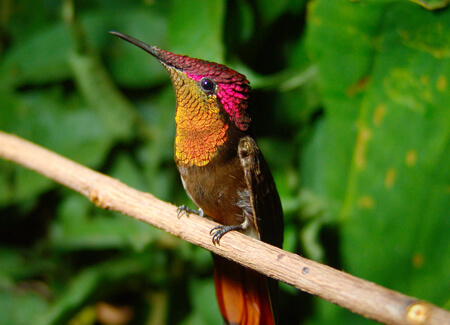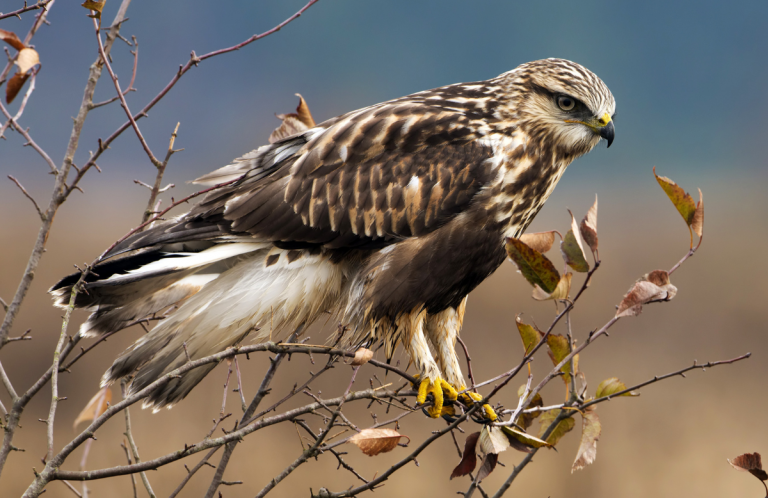 Charmingly, the species' scientific name is derived from khrusolampis (Greek for glow-worm) and mosquito (Spanish for "little fly").
Charmingly, the species' scientific name is derived from khrusolampis (Greek for glow-worm) and mosquito (Spanish for "little fly").
Although fairly widespread in lowlands and coastal regions, the Ruby-topaz—like other, more threatened hummingbirds including Esmeraldas Woodstar and Marvelous Spatuletail—could still be seriously impacted by habitat loss.
Rambling Ruby-topaz
The Ruby-topaz Hummingbird breeds in tropical areas of northern South America, south to northern Bolivia and central Brazil. The birds remain in parts of their range year-round and migrate in others.
Those hummingbirds that migrate move north to south within Brazil but follow an east-to-west path along the coastal regions of the Guyanas, Venezuela, and Colombia, moving southwards into Colombia. Experts suspect that some Ruby-topaz Hummingbirds migrate within Trinidad and Tobago.
Sign up for ABC's eNews to learn how you can help protect birds!

Ruby-topaz Hummingbird, El Paujil, Fundacion ProAves
Single Parenting, Hummingbird Style
Like other hummingbirds, including the Mangrove Hummingbird, and Long-tailed Sylph, the Ruby-topaz is solitary and forms no pair bond. The male woos the female by quickly circling her while fanning his chestnut tail and raising his ruby-red crown feathers. After mating, the female builds her nest and raises her young alone.
Ruby-topaz Hummingbirds primarily feed on nectar taken from a variety of flowering trees, shrubs, epiphytes, and cacti. Like other hummingbirds, they also consume small insects and seek out and aggressively defend areas containing flowers with high-energy nectar.
Winter Home for Hummingbirds
Since the Ruby-topaz Hummingbird accepts man-made habitats and frequents gardens and cultivated areas, its population appear to be stable, although a precise estimate is unknown.
The species can be spotted wintering at ABC-supported reserves in Colombia, maintained by our in-country partner Fundación ProAves. Find out more about El Dorado or El Paujil, or visit Conservation Birding to make travel plans.
Support the Hummingbird Effect!
In his recent book, Steven Johnson coins the term “Hummingbird Effect” to make the point that innovation in one realm can trigger unpredictable and unexpected advancement in others. We not only agree, but have dozens of examples of how great American bird conservation projects make considerable, sometimes unexpected contributions to other important causes including amphibian conservation, human health, food safety, climate change, water conservation, and home energy savings. Support the Hummingbird Effect today.
Donate to support ABC's conservation mission!



















































